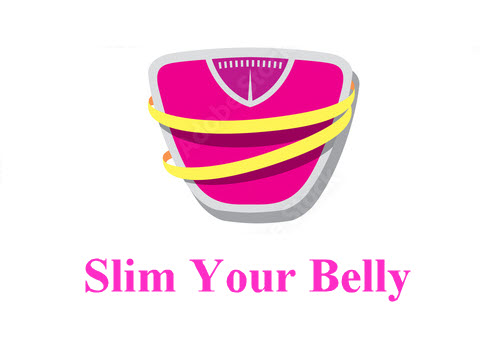I believe most people would love to know how to lose 2 pounds a week, but it seems like a near-impossible feat. Let’s be honest losing any amount of weight is hard work.
Eat Fewer Carbs
Limiting your calorie-dense carbs and automatically reducing the calories you consume each day forces your body to burn fat stored around the midsection for energy instead of sugar from carbohydrates. Diets low in carbohydrates are very effective for weight loss.
Reducing carbs leads to a reduction of appetite and consequent weight loss, which occurs without counting calories. Low-carb diets allow some people to eat until they feel delighted and still lose weight. It would be best if you exercised before eating breakfast in the morning. Doing this forces your body to burn stored fat instead of the food you ate earlier.
Eat Lean Protein
Getting enough protein in your diet has many health benefits. Protein can boost your energy, improve heart health, help you lose weight, or even help you bulk up. It’s vital to include lean protein in your diet as part of a healthy diet. You feel fuller for a more extended period when you consume protein foods, reducing the number of calories you consume each day.
According to a 2008 study in the “American Journal of Clinical Nutrition, ” protein increases satiety and may increase metabolism.”. Lean protein intake will also contribute to the body’s ability to maintain a healthy lean muscle mass, which is essential during weight loss.
Low-Calorie Diet
The most effective way to lose weight is to follow a diet restricting calories. It’s typical to consume between 1200-1500 calories per day when following a low-calorie diet, creating a calorie deficit that can result in weight loss. It is possible and practical to lose weight on a low-calorie diet, but it requires a high level of discipline. You should seek the help of a registered dietitian or physician to avoid over-restricting calories and sacrificing nutrition.
Since the 1980s, scientists have investigated claims that low-calorie diets slow aging. When it comes to weight loss, the science is simple: Consume fewer calories than you burn. No diet plan based on low-calorie intake is easy despite the simple science. It takes planning and effort to understand and recognize hunger cues to ensure that the 1200-1500 calories are enough to fuel the body and contain the proper nutrients.
High-Intensity Cardio
Weight loss ultimately comes down to eating less and moving more. Furthermore, it is essential to understand that different exercise intensities require your body to burn fat at different rates. If you do low-intensity cardio, you will burn more fat calories. However, since the exercise is less strenuous, you will burn fewer calories overall than if you performed high-intensity cardio.
A high-intensity cardio session benefits fat loss because you burn more calories per minute than a low-intensity cardio session. At the same time, your body recovers after a strenuous workout. To lose weight effectively, you should integrate low and high-intensity cardio to maximize your body’s fat-burning potential and burn more calories. We call this interval training.
Add Weights To Your Diet
Weight lifting allows you to lose fat instead of muscle and bone while dieting. It may surprise you, but only about 60 to 70% of the weight you lose when your diet is fat. 5 or 6 pounds of the weight comes from nonfat tissue, such as bones, muscles, and water weakens your body. Weightlifting preserves muscle and bone, meaning that up to 85% of what you trim is fat. After weight training, a person’s metabolic rate can remain elevated for up to 12 hours. Lifting weights will result in your body burning calories more rapidly.
One pound of muscle burns 5-10 calories daily while lying on the couch. An intense weightlifting routine can result in women gaining 1-2 pounds of muscle while men earn twice as much. It is estimated that two pounds of muscle consume 10-20 calories daily. Over months and years, this small change adds up. An average of 10 calories per day amounts to 3,650 calories per year, which equals a pound of fat. That muscle helped you avoid gaining 20 pounds of fat over 20 years.
Change Your Behavior
When preparing meals, do you eat? Do you finish the leftovers on your kids’ plates? Do you eat when you are stressed or unhappy? To lose weight successfully, you will have to alter the behaviors that contribute to weight gain in the first place. Undoubtedly, what you eat matters, but how, when, and where also matter.
You must become aware of your eating habits and realize eating is much more than simply meeting nutritional requirements. The rewards of changing habits could last a lifetime, but it takes time, effort, and discipline. To succeed at changing, you must think differently, reject self-defeating thoughts and behaviors, and replace them with self-control-boosting behaviors.
Discipline
Losing 2 pounds a week requires some severe discipline. Diet and exercise are essential to any weight loss program. If you aren’t exercising, you need to burn more calories than you take i
n. Losing weight is difficult if your body isn’t burning calories. Fortunately, it doesn’t have to be a struggle. You can burn as many calories with fun activities as you can at the gym if you dance, garden, practice yoga, and swim.
You may find it challenging to make your life into a workout machine. You can hit the gym daily, change your behavior, eat healthily, and even count calories. Despite the difficulty, you can do it.
